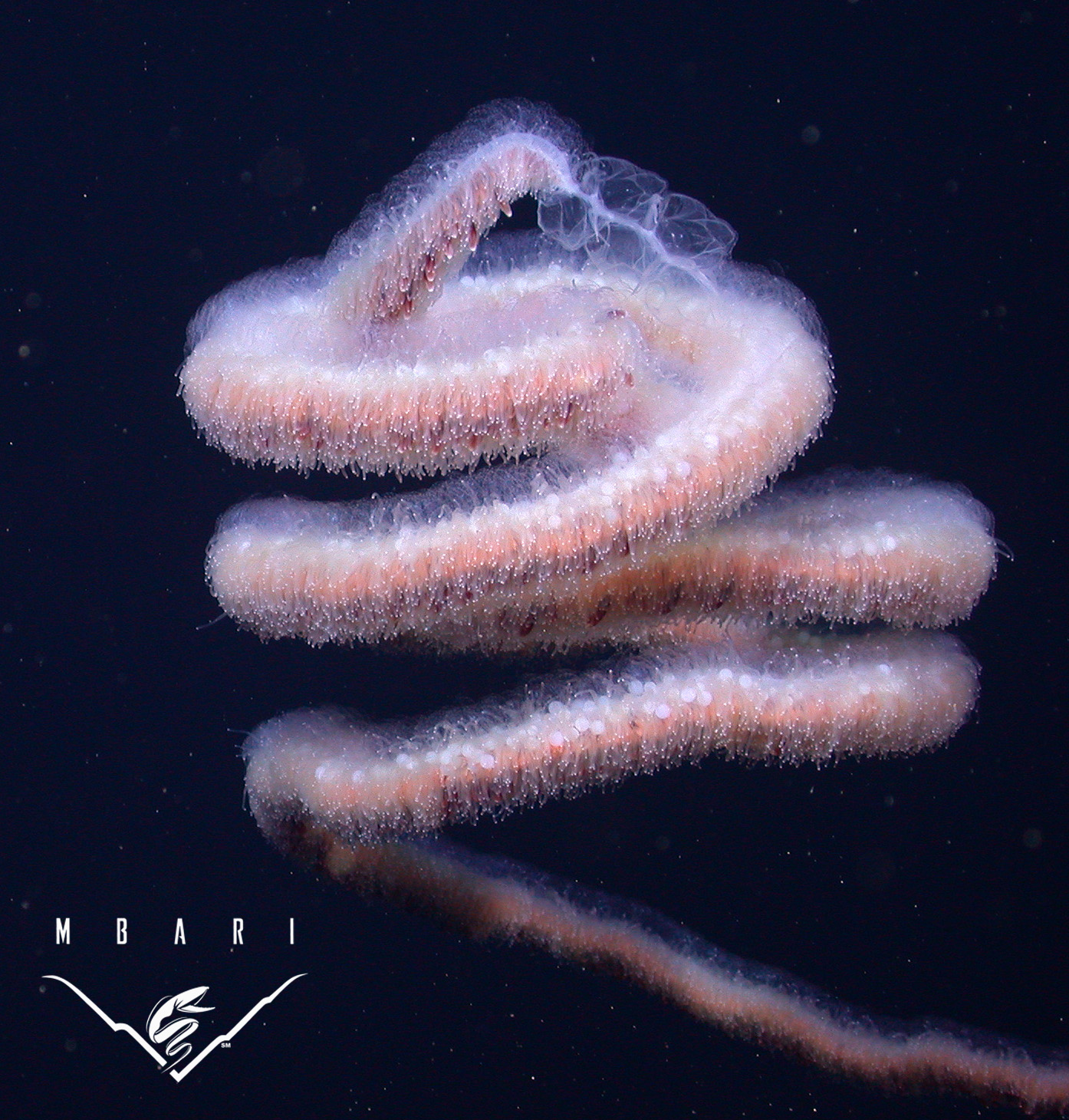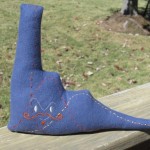
The above photo is of Apolemia lanosa a type of siphonophore belonging to phylum Cnidaria that also includes corals and jellies. It’s basically the ocean’s way of celebrating Christmas all year long. Like many other Cnidarians, siphonophores bud new individuals—exact clones themselves. In a manner similar to Christmas elves although this is not proven by science. In the case of some Cnidarians, the clones never leave home so family never has to travel for the holidays.
In some Cnidarians, clones in the colony will specialize but among siphonophores the specialization is unrivaled. Clones will specialize for feeding, defense, locomotion or reproduction. The feeding clones catch food by tentacles equipped with cells that shoot out poisonous harpoons stinging and stunning their prey. In the most popular of all siphonophores, the Portuguese man o’ war, with a large gas filled buoyant bladder adapted for catching the wind and sailing. Interestingly, all the clones are attached via a single digestive and circulatory system. Research is still needed on which clones are adapted for drinking eggnog, singing carols, and wrapping gifts.
The species of Apolemiidae may be record holders for the longest animals on earth. Fragments of specimens of this family with a length of over 30 meters have been reported from the French Mediterranean coast in the bay of Villefranche-sur-Mer. In most physonect siphonophores clones are arranged along a central stem, it itself the founding clone developed from a single egg. At the front end, is a group of clones that are propulsion clones. Basically, Santa’s reindeer if Dasher, Dancer, Prancer, Vixen were all budded from and identical to Santa. In the larger and remaining region of a physonect siphonophore, one can find the clones for engaging in the spirit of Christmas, eating and… New clones are formed in special growth regions of the siphonophore. As new clones are formed the old clones get pushed down the line. But Apolemia species are special. In addition to other clones Apolemia can also add new feeding clones along the entire length of the stem. This fact might be the reason why members of this particular family of siphonophores can grow to such tremendous length.






